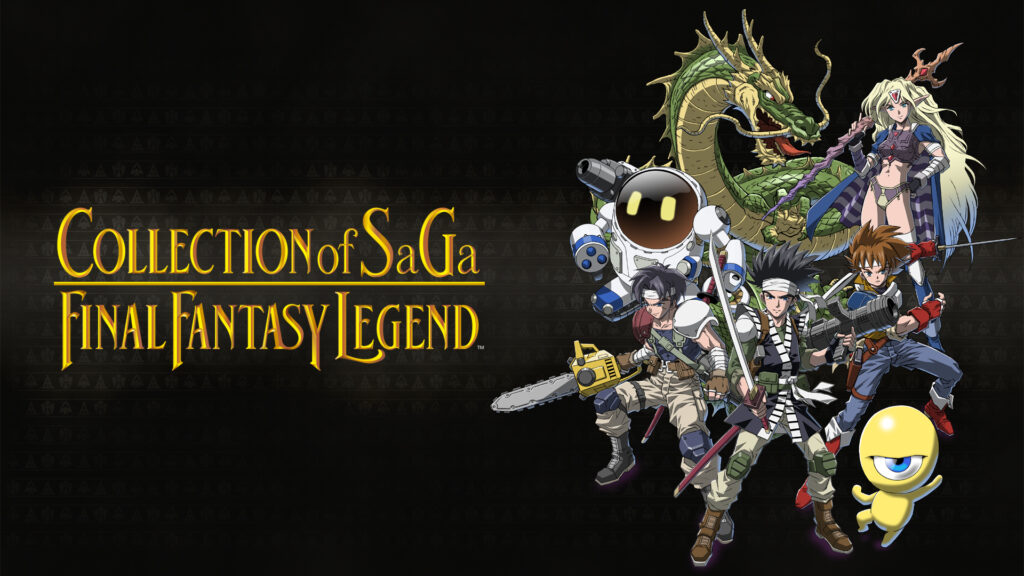
I despised SaGa Frontier, my first exposure to the SaGa series, when it came out. Since Square had managed to avoid the SaGa IP until then, I really had no idea that Frontier was the seventh game in the series and that three of them had already actually been released in North America. I just thought it was a weird, decentralized game that felt unfocused. Of course, my parents had never let me get a Game Boy and I’d never had a chance to play any of the Final Fantasy Legend games, so I’d missed the initial SaGa experience that other players got. Back in the 90s, Final Fantasy was the big name that sold to Westerners, so every Square franchise on the Game Boy had to be been branded with the Final Fantasy logo. We saw it on Final Fantasy Adventure even though it was part of the Mana series, and again on the Legend trilogy, which were the first three SaGa games in Japan.
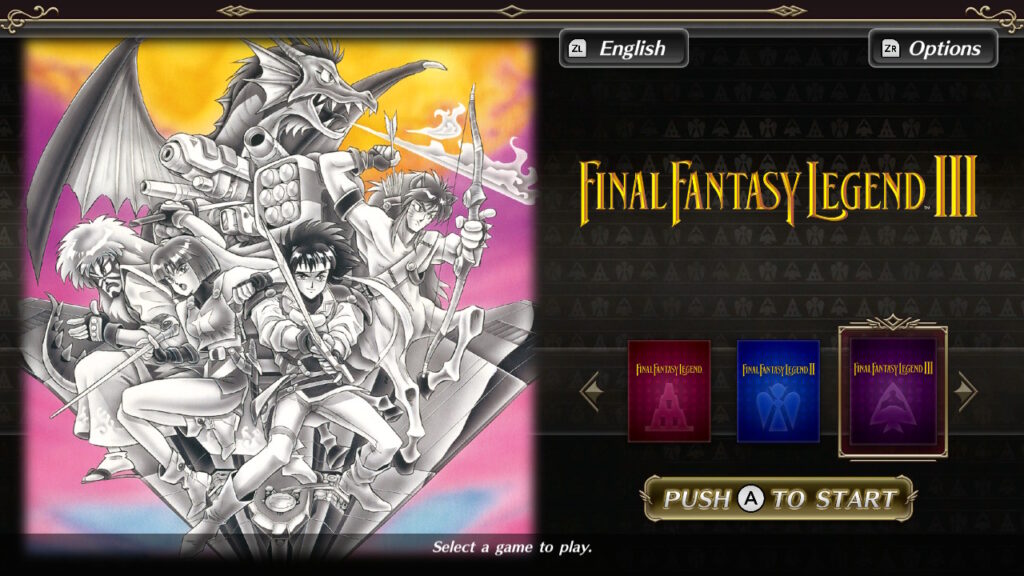
After their initial release in the early 90s, the Legend series vanished. The SNES sequels were never released in North America until recently and the couple of SaGa games that came here fell flat on Western audiences. Only a small cadre of loyal fans have been able to play these vintage titles, especially as prices have risen for used carts. But after all these years, Square Enix has finally released the entire Final Fantasy Legend Trilogy on the Switch as Collection of SaGa: Final Fantasy Legend. Bundling all three games into one purchase, Square Enix has made this into a unique retro collection, allowing RPG fans to relive their nostalgia, or in my case, finally get to play all three games!
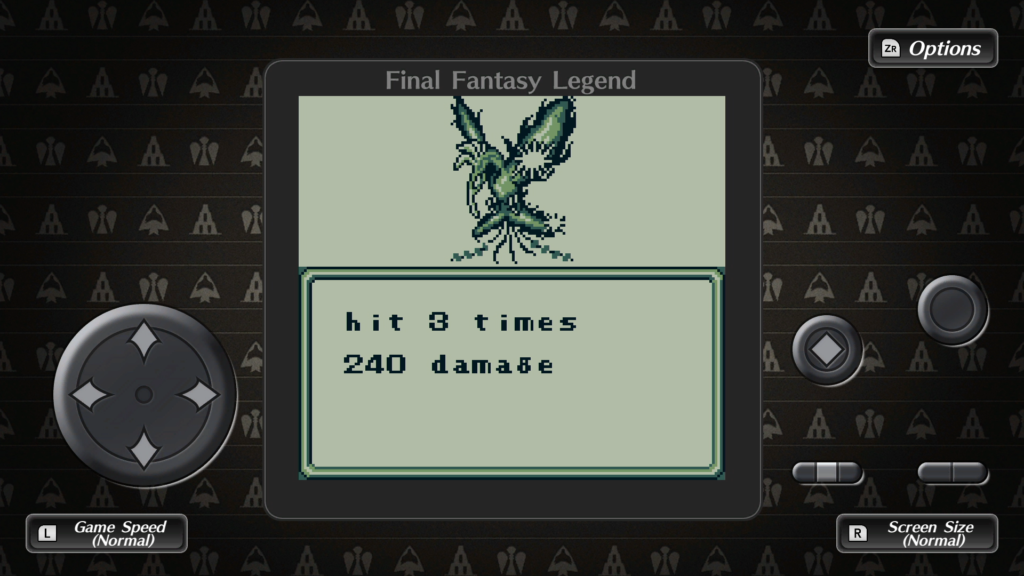
The Legend collection is relatively straightforward. Simply boot up and pick one of the three titles. Upon selection, you’re met with a screen that looks more like a Game Boy Micro than anything else. There’s a digital D-pad, start and select buttons, and two play buttons available. At the touch of a button you can increase the game display screen size or select a faster game speed (and considering how slow these games were initially, that’s a necessity). Just start a game and get going! Having never gotten a chance to play these games for more than a few minutes here and there back when they came out, I had no idea that they had incorporated a save anywhere function, one of the earliest RPGs to do so on a console! Pretty wild. I also forgot how much patience you need to play games from the early 90s, as the difficulty has not been modified or adjusted on any of the Legend games.
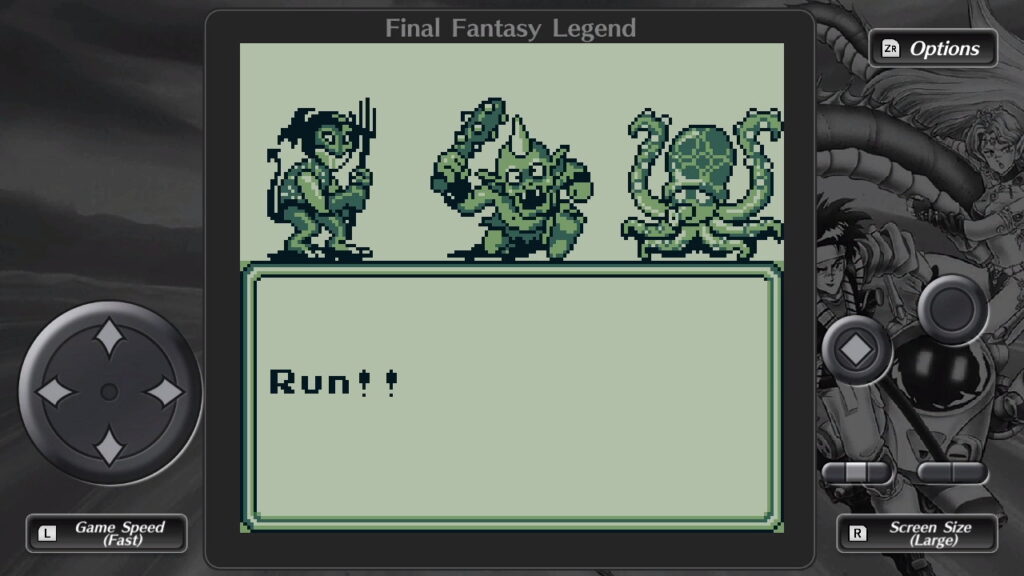
All of the Legend games are set up primarily to play on the Switch in tablet format, a unique design which digitally replicates the experience of playing them on an old Game Boy. It’s a clever way to deliver the games, but leads to little issues like forgetting that some people prefer to use physical buttons. In point of fact, when using the Switch undocked, it’s weirdly uncomfortable to reach the digital controls if you have the Joycons attached, since the assumption was that you wouldn’t use Joycons while playing. It’s certainly an odd oversight and one I’ve never encountered on a Switch game before. Docked, of course, there’s no issue as there’s no purpose to the digital controller on the large screen and Square Enix thoughtfully included an option to turn off the digital controller display.
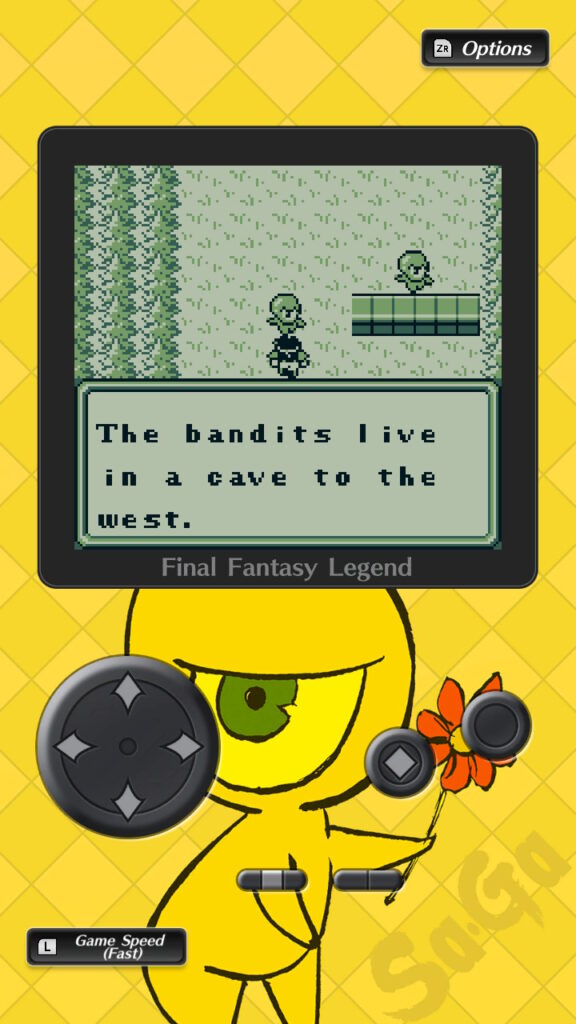
Let’s look at Final Fantasy Legend first. The earliest of the Legend series and the first SaGa game, FF Legend is unsurprisingly the most archaic of the trilogy. The plot is told in bits and pieces as you play slowly through the game, first opening and then climbing a huge tower consisting of whole worlds on each section. It’s nothing deep, though the overriding story itself is surprisingly heavy and more than a bit religious. What’s frustrating about Legend is that the gameplay is absolutely gruelling. Not only does your choice of characters matter greatly, but right from the get-go, you’re under-powered and the encounter rate is way too high. This is a common issue with older RPGs, but in Legend, it’s compounded by the fact that your weapons have limited uses before they break and disappear from your inventory. You’re in a constant battle to level up, grind, and replace weapons that never ends. Die and you’re in more trouble, as unlike other RPGs, Legend has permadeath for your characters. Each starts with three hearts. Fall to zero HP and you’ll have to get revived at a House of Life (if your party can even make it there) at the cost of a heart. Run out of hearts and you’re permanently dead. You’ll then have to go to the guild and get a new character. If you chose the wrong group composition at the start, this is the only way to replace characters as well, making for a lot of wasted time.
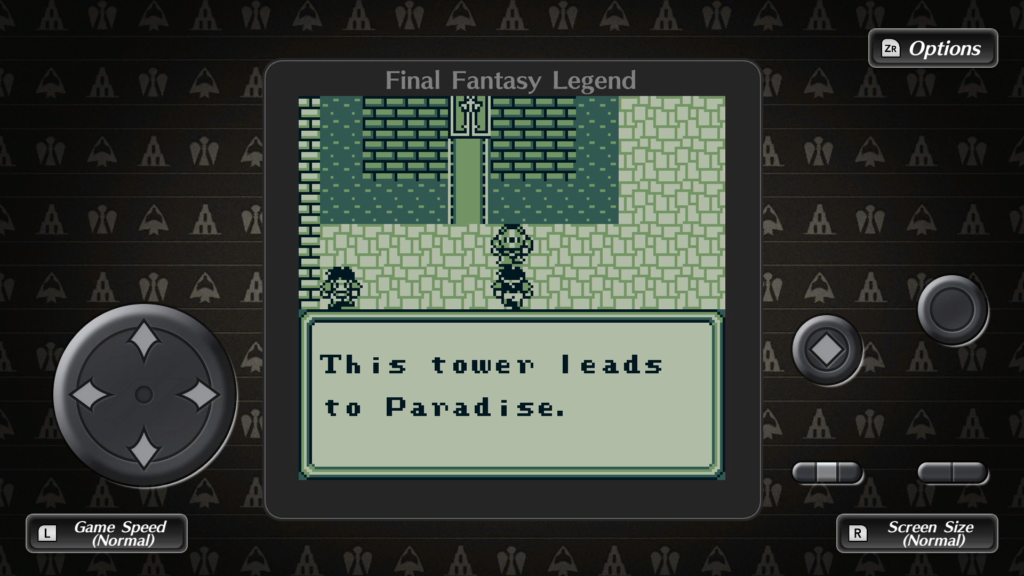
Eventually you’ll manage to level up and get into the swing of things. Humans can only upgrade with stat items, while Mutants level up through combat. Monsters have to eat meat to transform into more powerful monsters, though there’s absolutely no knowing what the heck will happen if you eat meat unless you either experiment a lot or use Wikipedia. Meat has no effect on anyone else, of course. It’s a weird system that doesn’t really endear you to the characters much, but forces you to manage item usage carefully to maximize your party members. Honestly, as this was my first experience with the game, I found it incredibly tedious. While I might have played it back in the early 90s, I had trouble caring what was happening in Final Fantasy Legend. I found the music repetitive and the gameplay patience-testing at best, and I was longing for more plot during most of my time with it. This is an old game and while I understand that it’s included as part of the series, it’s more of a historical relic that’s mildly interesting than a game that I want to spend the hours with that I’d need to to finish it entirely.
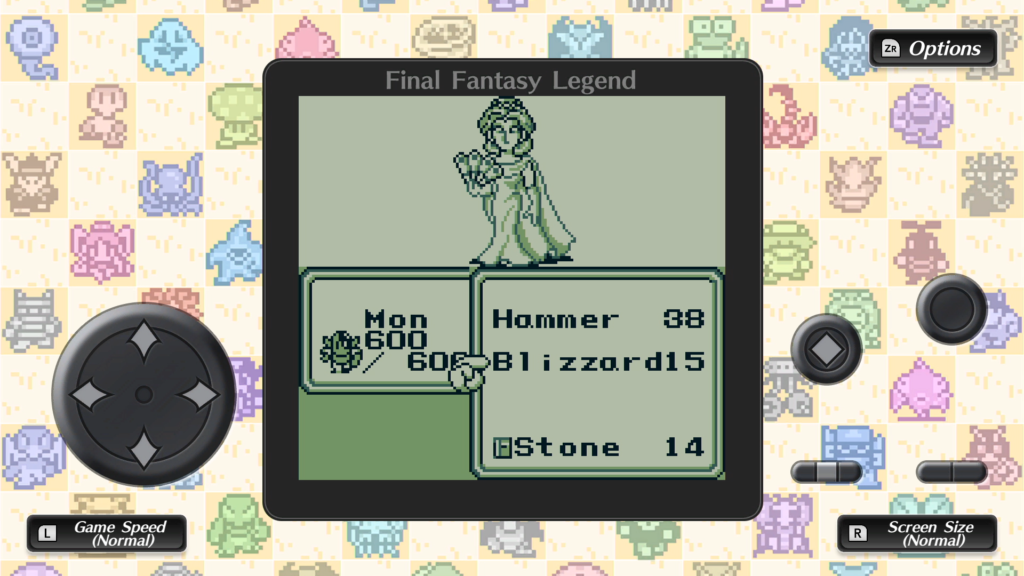
Fortunately, Final Fantasy Legend isn’t the entire compilation here. Also included are Final Fantasy Legend II and III. Legend II is, naturally, a noticeable upgrade from Legend. While the game looks roughly the same as the first, Legend II has eight character classes to Legend’s three, but there’s still meat to be eaten! This time around, instead of climbing a giant tower, you’re collecting the 77 shattered pieces of the goddess Isis’ statue, called Magi shards. These shards are powerful and in high demand so you’ll have to fight your way through a plethora of gods and monsters. While the world is open, it’s also connected to other worlds where the shards have been smuggled off too and you’ll have to collect Magi shards to unlock access to those worlds. Manage to get them all and the story picks up and takes a serious turn. While it sounds cool, the actual gameplay hasn’t evolved much from the first game. There’s now a world map however, and thankfully, a solution to the vicious permadeath of the first game. Simply pledge yourself to Odin and he’ll let you retry a battle! Certainly an improvement! Overall, Final Fantasy Legend II is a noticeable upgrade in terms of playability from the first game, but it’s still pretty grindy, forcing you to struggle your way through with minimal storyline in bursts in between extended leveling sections.
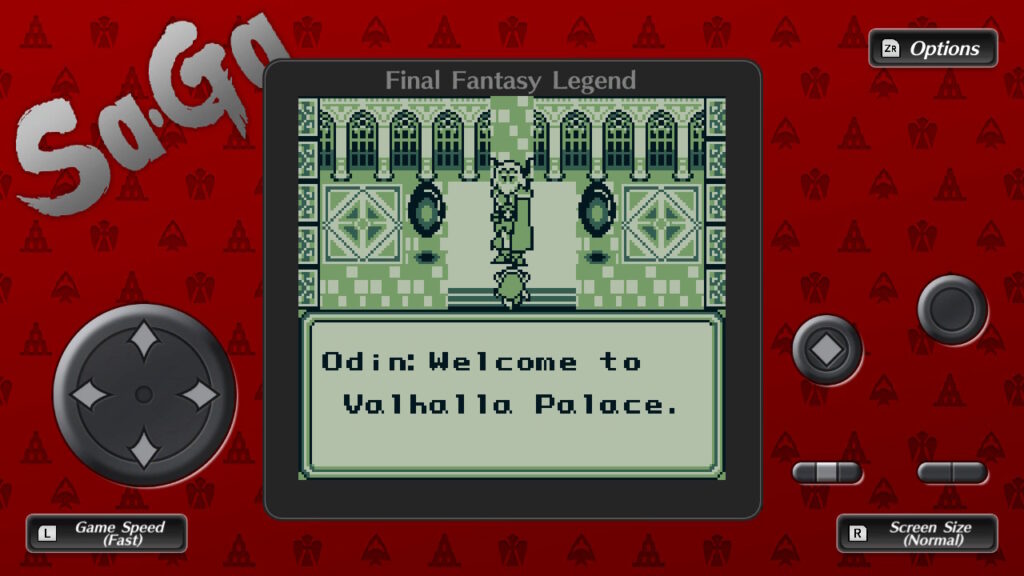
Finally, there’s the third game, Final Fantasy Legend III. There’s a significant increase in production value here, with the story being more complex and using actual named characters. Unlike previous Legend games, Legend III gives you a permanent party of two humans and two mutants and you play they through the whole game (no more permadeath). Unfortunately, the world is doomed and has sunk under floodwaters unleashed by yet another god. The solution? Attack the entity in the past and then defeat it in the present and future as well! This is some high concept stuff for the limited graphics of the game and sparse dialogue. It truly sounds cool though, and if you have the patience to play through the still somewhat grindy combat, you’ll probably enjoy it. This time around you can um, evolve your characters into better ones (much like a certain Nintendo franchise). Humans can turn into Cyborgs and Robots (yes, really) and Mutants into Beats and Monsters with the ever-present meat. Also unlike the previous games, there’s only one world, even though you’re in its past, present, and future. You can once again travel most places and have to earn abilities to travel further over and under water. Overall this is the best of the three titles with a sliver of character development and a more solid plot, but it’s still a fairly straightforward game that requires some vintage RPG grinding. The longest of the Legend series, it takes a solid 15-20 hours to complete and even as the best of the trilogy, comes off as more than a bit dated today.
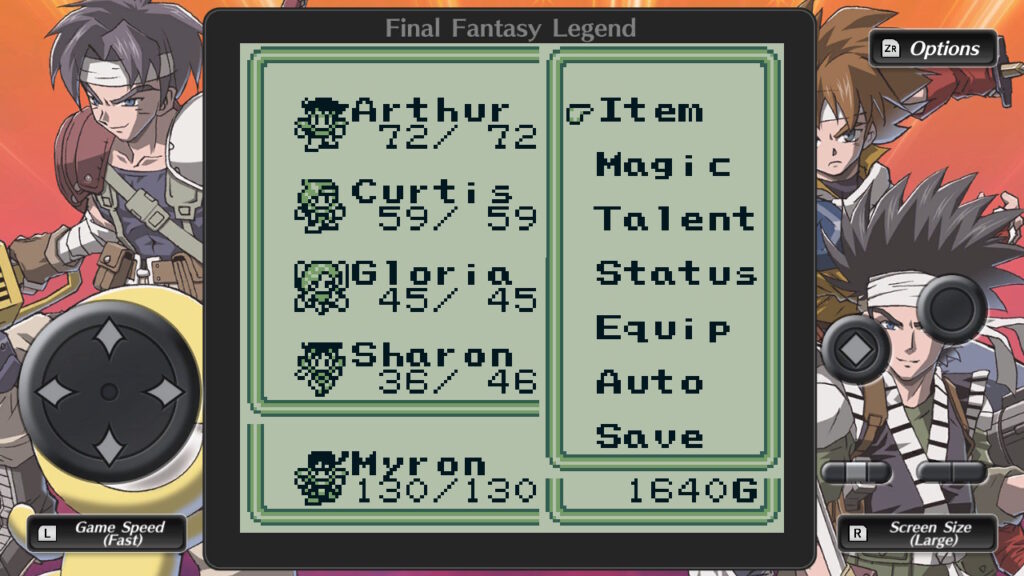
After experiencing each of the Legend games, there’s not much else here. No historical retrospective, no digital glossary, no jukebox. Collection of SaGa: Final Fantasy Legend is devoid of any significant nods to its fairly limited fan base. Sure, you can change the wallpaper on your virtual gameboy screen, but it’s mostly fairly distracting artwork and the default one is by far the least offensive. Apparently the music is upgraded, but it didn’t feel like anything special overall. Definitely not the toe-tapping earbugs I’d expect from Uematsu, who wrote the scores for the first two games. Visually, there’s been no overhaul here, no color added, nothing notable other than the screen zoom, and playing in vertical mode is a neat idea, but it’s a poor substitute for an actual Game Boy. I even tried to attach the handy dandy Flip Grip to Collection of SaGa, but to no avail as the screen flips the opposite of the direction needed and doesn’t have a reverse flip that would enable use of this handy device. On a more positive note, it should be mentioned that this is a very well-optimized game and it loads extremely fast and is very responsive in both menus and in-game as well, a notable plus.
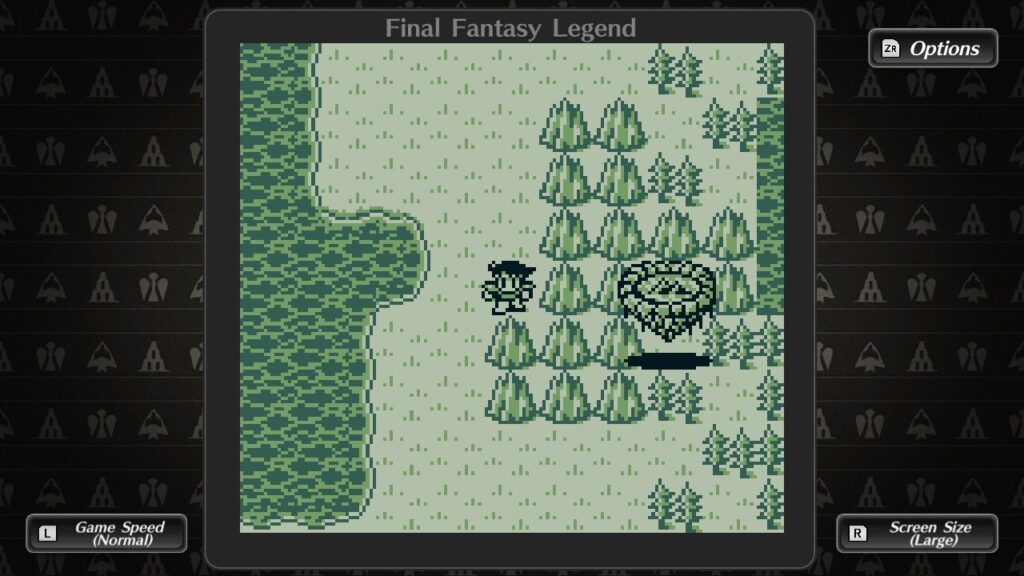
Collection of SaGa: Final Fantasy Legend is an interesting offering. In keeping with other recent releases, Square is continuing to make its back catalog available to new and old gamers alike. It’s nice to have the option to play all of the Legend games for the first time in decades, but they’re also old and fairly dated, especially Final Fantasy Legend. Unless you’re buying for nostalgia, stick with Legend II and especially Legend III here. Fortunately, they’re both more playable and the speed enhancement and zoom functions help a lot with that. The monster designs are pretty decent too, so you won’t get too bored between the sparse story segments. At only $20, this is honestly a decent compilation that’s both accessible and reasonably priced. Just for Final Fantasy Legend III alone, it’s worth picking up, assuming you don’t mind playing old black and white games and have a bit of patience for the age of the titles. If you’re a casual player, these might not be for you, but if you’re a retro-RPG fan, you owe it to yourself to pick this collection up!
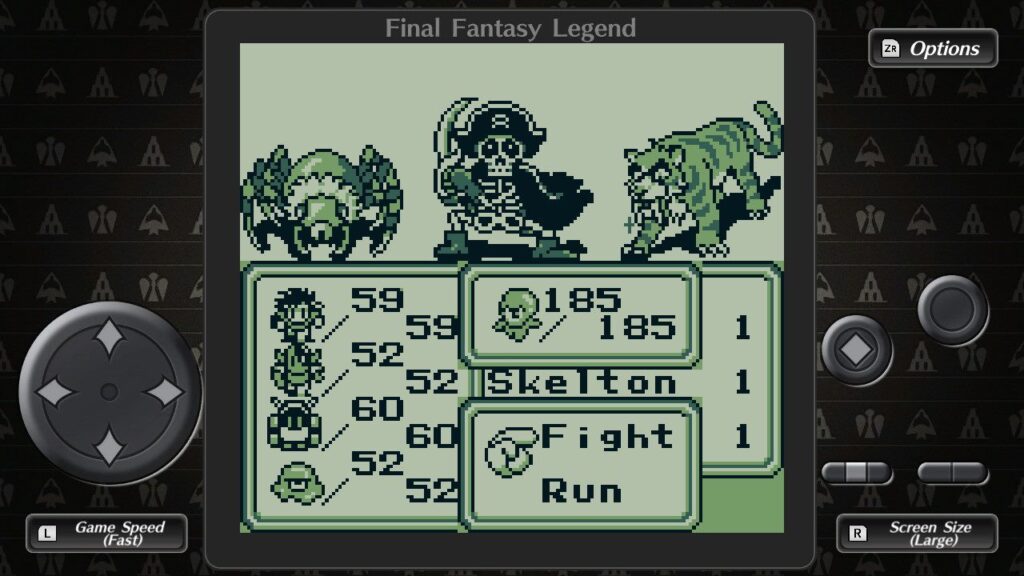
This review is based on a digital copy of Collection of SaGa: Final Fantasy Legend provided by the publisher. It was played on a Nintendo Switch in both docked and undocked modes and played equally well in both. Collection of SaGa: Final Fantasy Legend is currently a Switch eShop exclusive.
…………..
In addition, for access to an extensive variety of active retro gaming groups on Facebook, visit Retro Gamers Hub.

